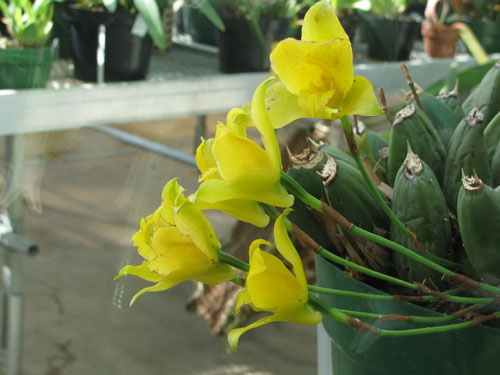Pseudobulbs
Pseudobulbs are thickened stems at the base of each growth in a sympodial orchid, usually an epiphyte. They serve as storage organs, primarily for water, and are more likely to be present in orchids that experience drought in their natural habitats. They may last only one year, or for several years, depending on the type of orchid. They differ botanically from true bulbs (like in tulips), which are actually masses of thickened leaves or petioles around a short stem. Corms and tubers also have technical differences.
Conspicuous pseudobulbs on a Lycaste